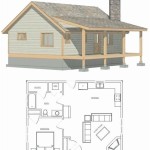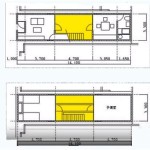Essential Aspects of a Comprehensive House Electrical Plan
An electrical plan is a crucial blueprint that guides the safe and efficient installation of electrical systems in a house. This intricate document outlines the placement of electrical outlets, switches, lighting fixtures, and other components, ensuring that the home's electrical infrastructure meets both code requirements and the individual needs of its occupants.
Creating a comprehensive electrical plan requires careful consideration of several key aspects:
1. Load Calculations:
Determining the electrical load capacity of the house is essential to ensure the electrical system can handle the demand of all appliances, fixtures, and lighting. This involves calculating the amperage and wattage requirements of each circuit and ensuring that the electrical service entrance is adequate.
2. Circuit Layout:
The electrical plan should clearly define the layout of circuits, indicating the purpose of each circuit and the location of outlets, switches, and other devices connected to it. This ensures that circuits are not overloaded and facilitates easy troubleshooting in the future.
3. Circuit Protection:
Electrical circuits must be protected against overcurrent conditions using circuit breakers or fuses. The electrical plan should specify the type and amperage rating of protective devices for each circuit, ensuring that they can safely interrupt the flow of electricity in case of a fault.
4. Grounding and Bonding:
Proper grounding and bonding are crucial for electrical safety. The electrical plan should indicate the location of grounding electrodes, bonding points, and the grounding system used. This ensures that electrical equipment is properly grounded and protected against electrical shock.
5. Lighting Design:
Lighting plays a vital role in creating a comfortable and functional living environment. The electrical plan should outline the placement of lighting fixtures, switches, and dimmers to optimize lighting levels and create the desired ambiance throughout the house.
6. Smart Home Integration:
Modern electrical plans often incorporate smart home technology, such as automated lighting, smart switches, and voice control integration. The electrical plan should account for the installation of smart home devices and the necessary wiring infrastructure to support them.
7. Compliance with Codes:
Electrical plans must adhere to local building codes and electrical safety standards. These codes ensure that electrical installations are compliant with safety regulations and minimize the risk of electrical hazards. It is crucial to have the electrical plan reviewed and approved by a licensed electrician before implementation.
By carefully considering these essential aspects, you can create a comprehensive electrical plan that will provide a safe, efficient, and functional electrical system for your house. It is always advisable to seek professional assistance from a qualified electrician to ensure the proper design and installation of your home's electrical infrastructure.
Create An Electrical Plan Roomsketcher Help Center

Free House Wiring Diagram Edrawmax

Typical Electrical Plan For A Small One Family House Image Was Scientific Diagram

House Electrical Plan Diagram Symbols

How To Draw An Electrical Plan With Roomsketcher

Electrical Drawing Blueprints Plan Layout Floor

Residential Wiring Diagrams And Layouts House Home Electrical

House Wiring Diagram Everything You Need To Know Edrawmax

House Electrical Plan In Autocad File Cadbull

Apartment House Electrical Layout Plan Drawing Dwg File








